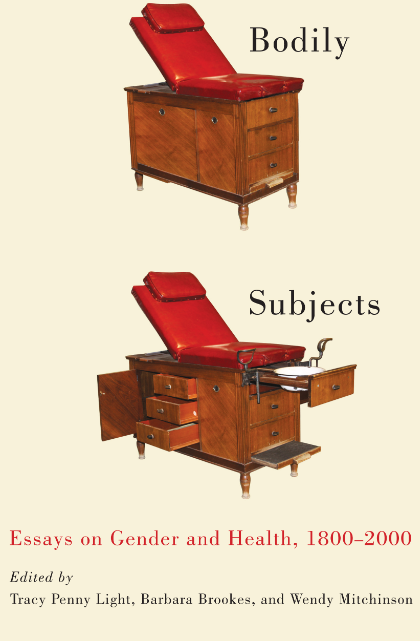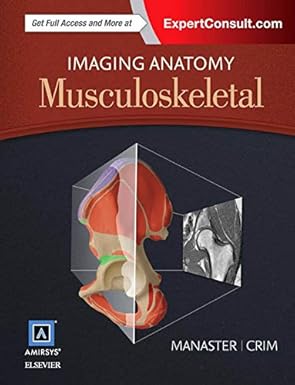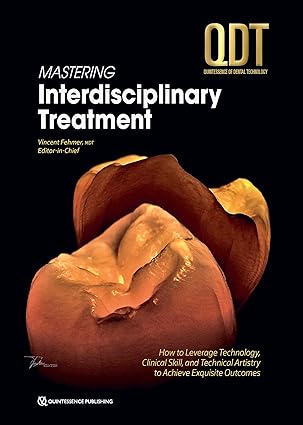The arc of this collection proceeds through a series of site-specific case studies to demonstrate the way health is refracted by gender and how “health” itself is open to a myriad of interpretations determined by Introduction B a r b a r a B r o o k e s , W e n d y M i t c h i n s o n , T r a c y P e n n y L i g h t 4 Bodily Subjects class, race, ability, and expertise. By demonstrating how these interpre- tations are chronologically and geographically specific, our intention is to promote further research on gender and health. Taken together, the essays in this volume address the multiple meanings of health over time and place. Health has too often become a concept whose meanings we assume to understand. Historical case studies suggest the way defini- tions of health are saturated in cultural meaning. Health, therefore, has been defined by the ability to look or act in whatever way was considered normal; in turn, normal was almost always gendered. The topics of health and gender have generated a vast range of schol- arship from authors in a multitude of disciplines but only rarely have they been considered together. Women’s health and women in the health professions have been the focus of two major collections, Judith Walzer Leavitt’s Women and Health in America (1984) and Rima Apple’s Women, Health, and Medicine in America (1990). These collections were preceded by Edward Shorter’s A History of Women’s Bodies (1982) and succeeded by a number of significant studies such as Ornella Moscucci’s The Science of Woman: Gynaecology and Gender in England 1800–1929 (1990), Wendy Mitchinson’s The Nature of their Bodies: Women and their Doctors in Victorian Canada (1991), and Barbara Duden’s The Woman Beneath the Skin: A Doctor’s Patients in Eighteenth Century Germany (1991). Since that time there has been an outpouring of books on the body in various aspects but a lack of scholarship on the relational understand- ings of health, that is, how the “normative” state of health is deeply gendered.3 That “normative” state has become an idealized one that very few people can meet. The 1948 World Health Organization (W H O ) defini- tion of the concept of health was “a state of complete physical, mental and social well-being and not merely the absence of disease or infirmi- ty.”4 As Daniel Callaghan pointed out, through that definition human happiness became “one more medical problem, to be dealt with by scientific means.”5 It also led to “health as a condition of ideology as well as longevity” that masks inequalities and has the potential to indi- vidualize wider social problems. 6 This critique has been developed fur- ther by Jonathan Metzl and Anna Kirkland in Against Health: How Health Became the New Morality.7 The way in which that idealized state works in popular culture is explored in Cheryl Krasnick Warsh’s recent collection Gender, Health, and Popular Culture: Historical Perspectives (2011), which covers a variety of topics on the transmission of health information and popular Introduction 5 representations of the body. Together, that collection and this one re- flect the widening of understandings about the compass of health and interest in it. Many topics in both would not have been thought of as under the rubric of health history even a decade ago. While the Warsh collection focuses on the popular culture aspect of twinning gender and health, the focus of Bodily Subjects is less on popular culture and more on the way gender identity was reinforced over time by different meanings of health.8 To take but one example, in antebellum America, to be a man in working class communities was to be a manual worker and to be a worker required an able body. A man who chose not to work was, by definition, unhealthy. Good health was, therefore, synonymous with manhood. Celia Roberts has noted that “the history of biological bodies is important precisely because it shows ... the lack of separation between scientific representations and the materiality of bodies.”9 Brigitte Fuchs’ examination of the gendering of bones in nineteenth-century central Europe indicates how representations of the body are social and cultural constructions resulting from scrutiny by “health” professionals. Similarly, Antje Kamp analyzes how a new medical specialty – that of andrology – arose to attend to the fertility of otherwise healthy men in post-war Germany. Bodies, then, were redefined through the work of medical specialists working with particular gendered frameworks. In their research, the international contributors to this volume have interrogated how embodied meanings of health changed over two cen- turies of Western culture embracing three continents. They have done so from a variety of historical perspectives, from the legal to the popular, using different methodologies, from close readings of medical texts to quantitative analysis of Poor Law records. Their histories are influenced by different theoretical concepts, from social control to cultural histo- ry’s attention to “the making of meaning,” that is, how women and men in the past, to use Mary Fissell’s words, “made sense of their lives, of the natural world, of social relations, of their bodies.” 10 Our authors use a range of sources, including medical texts, found interviews, research reports, advertisements, men’s magazines, and the ephemera of health activists. The perspectives, methodologies, theoretical influences, and sources used are determined by the topics that the authors have inves- tigated, all of which reflect the current expansiveness of the history of health. Evident in the explorations around embodiment are the ways that class and race often influence how health and illness are understood for women and men, and how dominant discourses and 6 Bodily Subjects subversive ones illuminate what is considered “natural” or “normal” in different times and places. Collectively, the chapters point to the ways that gender influences well-being and its perception, demonstrating the intersectionality that is evident when studying the history of gender and health. Bodily Subjects contributes to the history of medicine and health, as well as cultural, gender, and health studies. Gender has become a concept that is central to analysis in the humanities and social sciences. This one word serves to encapsulate a complex symbolic system through which the attributions “masculine” and “feminine” come to be embodied so that, “through social and cultural practice,” they have “become integral to customary ways of thinking, feeling and acting.” 11 Complicated by class, ethnicity, religion, and age, gender is a lens through which those who look at the past seek to understand it. In the early years of gender studies, the goal was to eliminate the way in which the two-sexed model essentialized the body into two binary forms – men and women – by examining the meaning of masculinity and femininity and what being male or female signi- fied. 12 Wendy Mitchinson’s study of pharmaceutical advertisements for appetite suppressants, for example, finds that women were depicted as sedentary overeaters while men were depicted as active overeaters. These simple depictions worked within layers of cultural expectations of the appropriate roles of women and men in 1950s and 1960s Canada. Catherine Gidney’s study of students in Canada from 1900 to 1960 suggests how an emerging emphasis on “healthy” personal development held out seeds of new possible futures for women. The meanings of masculinity and femininity, therefore, are contingent and contested and influence understandings of health, a matter overlooked when the focus is on women’s health in isolation. The authors represented in this volume work within a relational understanding of gender in that ideas about normative behaviour for one sex have implications for ideas about normative behaviour for the other. While much of the scholarly work on the meaning of gender has been discursive in its approach, focusing on the way language makes mean- ing such as the nineteenth-century understanding of women as “the sex,” the corporeality and materiality of bodies cannot be dismissed.13 Both meanings, whether discursive or corporeal, strike at the heart of the meaning of health.14 Gender can reflect how and why people became ill, why they were perceived to be ill, and how differently they were judged and judged themselves when they were. A I D S was first understood, as Natalie Gravelle analyzes, as a disease of homosexual Introduction 7 men, hence no thought was given to providing services for women. Women activists worked to shift this perspective so that women sufferers might receive treatment. By exploring gender and health as inextricably linked entities in the nineteenth and twentieth centuries, the essays in the collection add to our understanding of the systemic role gender played and continues to play.15 The World Health Organization has recognized the significance of gender and health in suggesting that gender norms and values “give rise to gender inequalities” that have an impact on “health status and access to health care.” It gives the example of a teenage boy dying in an accident because of peer pressure to take risks and the example of women, in some communities, who may not receive health care because they are unable to travel alone to clinics. 16 Both are examples of how gender, health, and identity are enmeshed. History is replete with such exam- ples of the way specific gender norms in time and place influence well- being, and this collection attempts to explore some of these. When heterosexuality is normative, for example, ideas about health serve as a form of “moralization” prescribing the boundaries of acceptable behav- iour for the young, a topic explored in the chapter by Anika Stafford and Mona Gleason. The editors of the collection are mindful of how such history lives in the present and carries into the future. The historiography of health is rich and complex and in many respects follows the changing nature of the discipline of history itself. The mod- ern beginning of scholarship in medical history was in the study of med- icine as a profession and the “great” men who practised it. Challenged by scholars such as Henry E. Sigerist, the history of medicine became more interpretive and contextualized. With the emergence of social and feminist history new queries about medicine, its power, and its in- fluence came to the fore. That power and influence is still recognized by medical sociologists today. As Juanne Nancarrow Clarke argues, “The physician is not only a scientist but also a moral decision-maker. Medicine can legitimate the illness it diagnoses on the condition that the patient adopts the ‘sick role’ prescribed by the doctor. Medicine defines what is deviant from health and also how the patient is to react to that defini- tion. Illness is legitimated deviance insofar as it has been identified by the physician and the appropriate steps are taken by the patient to get well
چکیده فارسی
قوس این مجموعه از طریق مجموعهای از مطالعات موردی خاص سایت ادامه مییابد تا نشان دهد که چگونه سلامت بر اساس جنسیت منعکس میشود و چگونه خود «سلامت» به تعداد بیشماری از تفاسیر تعیینشده توسط مقدمه B a r b a r a B r o k e s، W e n d باز است. M i t c h i n s o n , T r a c y P e n y L i g h t 4 کلاس درس، نژاد، توانایی و تخصص. با نشان دادن اینکه چگونه این تفاسیر از نظر زمانی و جغرافیایی خاص هستند، قصد ما ترویج تحقیقات بیشتر در مورد جنسیت و سلامت است. در مجموع، مقالات این جلد به معانی متعدد سلامت در طول زمان و مکان می پردازد. سلامت اغلب به مفهومی تبدیل شده است که تصور می کنیم معانی آن را درک می کنیم. مطالعات موردی تاریخی نشان میدهد که تعاریف سلامت در معنای فرهنگی اشباع شدهاند. بنابراین، سلامت با توانایی نگاه کردن یا رفتار به هر شکلی که طبیعی تلقی می شد تعریف شده است. به نوبه خود، نرمال تقریباً همیشه جنسیت داشت. موضوعات سلامت و جنسیت طیف وسیعی از بورس تحصیلی را از نویسندگان بسیاری از رشته ها ایجاد کرده است، اما به ندرت آنها با هم مورد توجه قرار گرفته اند. سلامت زنان و زنان در حرفه های بهداشتی مورد توجه دو مجموعه بزرگ، زنان و سلامت در آمریکا اثر جودیت والزر لیویت (1984) و زنان، سلامت و پزشکی در آمریکا از ریما اپل (1990) بوده است. پیش از این مجموعه ها، تاریخچه بدن زنان ادوارد شورتر (1982) و با تعدادی از مطالعات مهم مانند علم زن: علم زنان و جنسیت در انگلستان 1800-1929 (1990) اثر اورنلا موسکوچی، وندی میچینسون، ماهیت آنها، انجام شد. بدن: زنان و پزشکان آنها در ویکتوریا کانادا (1991)، و باربارا دودن، زن زیر پوست: بیماران پزشک در آلمان قرن هجدهم (1991). از آن زمان کتابهایی در مورد بدن از جنبههای مختلف سرازیر شده است، اما در مورد درک رابطهای از سلامت، یعنی اینکه چگونه وضعیت «هنجاری» سلامت عمیقاً جنسیت میشود، پژوهشی وجود ندارد. دولت تبدیل به یک کشور ایده آل شده است که افراد بسیار کمی می توانند با آن روبرو شوند. تعریف سازمان جهانی بهداشت در سال 1948 (WH O) از مفهوم سلامت عبارت بود از «وضعیت رفاه کامل جسمی، روانی و اجتماعی و نه صرفاً فقدان بیماری یا ناتوانی». از طریق آن تعریف، خوشبختی بشر به «یک مشکل پزشکی دیگر تبدیل شد که باید با ابزارهای علمی با آن برخورد کرد.» (5) همچنین منجر به «سلامتی به عنوان شرط ایدئولوژی و همچنین طول عمر» شد که نابرابریها را پنهان میکند و این پتانسیل را دارد که فرد را گستردهتر کند. مشکلات اجتماعی. 6 این نقد بیشتر توسط جاناتان متزل و آنا کرکلند در کتاب «علیه سلامت: چگونه سلامتی به اخلاق جدید تبدیل شد» ارائه شده است. و فرهنگ عامه: چشم اندازهای تاریخی (2011)، که موضوعات مختلفی را در مورد انتقال اطلاعات بهداشتی و معرفی 5 محبوب بدن را پوشش می دهد. با هم، آن مجموعه و این مجموعه منعکس کننده گسترش درک در مورد قطب نما سلامت و علاقه به آن است. بسیاری از موضوعات در هر دو حتی یک دهه پیش تحت عنوان تاریخچه سلامت تصور نمی شد. در حالی که مجموعه وارش بر جنبه فرهنگ عامه دوقلوسازی جنسیت و سلامت تمرکز دارد، تمرکز سوژه های بدنی کمتر بر فرهنگ عامه است و بیشتر بر روشی است که هویت جنسیتی در طول زمان توسط معانی مختلف سلامت تقویت شده است. در آمریکای قبل از جنگ، مرد بودن در جوامع طبقه کارگر به معنای یک کارگر یدی بود و برای کارگر بودن به بدنی توانا نیاز داشت. مردی که کار نکردن را انتخاب کرد، طبق تعریف، ناسالم بود. بنابراین، سلامتی مترادف با مردانگی بود. سلیا رابرتز خاطرنشان کرده است که «تاریخ اجسام بیولوژیکی دقیقاً به این دلیل مهم است که ... عدم تفکیک بین بازنمایی های علمی و مادی بودن اجسام را نشان می دهد.» بررسی بریژیت فوکس در مورد جنسیت استخوان ها در اروپای مرکزی قرن نوزدهم. نشان می دهد که چگونه بازنمایی بدن، ساختارهای اجتماعی و فرهنگی ناشی از بررسی دقیق متخصصان «سلامت» است. به طور مشابه، Antje Kamp تجزیه و تحلیل می کند که چگونه یک تخصص پزشکی جدید - آندرولوژی - برای مراقبت از باروری مردان سالم در آلمان پس از جنگ به وجود آمد. بدنها پس از آن، از طریق کار متخصصان پزشکی که با چارچوبهای جنسیتی خاص کار میکردند، دوباره تعریف شدند. در تحقیقات خود، مشارکتکنندگان بینالمللی در این جلد بررسی کردهاند که چگونه معانی تجسم یافته سلامت در طول دو قرن فرهنگ غربی که سه قاره را در بر میگرفت، تغییر کرده است. آنها این کار را از دیدگاههای تاریخی گوناگون، از حقوقی گرفته تا عمومی، با استفاده از روششناسیهای مختلف، از خوانش دقیق متون پزشکی تا تحلیل کمی سوابق Poor Law انجام دادهاند. تاریخچه آنها متاثر از مفاهیم نظری مختلف است، از کنترل اجتماعی گرفته تا توجه تاریخ فرهنگی به "معناسازی"، یعنی اینکه چگونه زنان و مردان در گذشته، به قول مری فیسل، "زندگی خود را معنا می کردند، از جهان طبیعی، از روابط اجتماعی، از بدن آنها. 10 نویسندگان ما از طیف وسیعی از منابع، از جمله متون پزشکی، مصاحبههای یافت شده، گزارشهای تحقیقاتی، آگهیها، مجلات مردانه و فرصتهای فعالان سلامت استفاده میکنند. دیدگاهها، روششناسی، تأثیرات نظری، و منابع مورد استفاده با موضوعاتی که نویسندگان بررسی کردهاند تعیین میشوند، که همگی منعکسکننده گستردگی کنونی تاریخ سلامت هستند. در کاوشهای پیرامون تجسم، شیوههایی که طبقه و نژاد غالباً بر چگونگی درک سلامت و بیماری برای زنان و مردان تأثیر میگذارند، و اینکه چگونه گفتمانهای غالب و 6 سوژههای بدنی برانداز، آنچه را که «طبیعی» یا «طبیعی» در زمانهای مختلف تلقی میشود، روشن میکنند، مشهود است. و مکان ها در مجموع، فصلها به راههایی اشاره میکنند که جنسیت بر رفاه و ادراک آن تأثیر میگذارد، و نشاندهنده ارتباط متقابلی است که هنگام مطالعه تاریخچه جنسیت و سلامت مشهود است. Bodily Subjects به تاریخ پزشکی و سلامت و همچنین مطالعات فرهنگی، جنسیتی و بهداشتی کمک می کند. جنسیت به مفهومی تبدیل شده است که در تحلیل در علوم انسانی و اجتماعی نقش محوری دارد. این یک کلمه دربرگیرنده یک سیستم نمادین پیچیده است که از طریق آن اسناد «مردانه» و «مونث» تجسم مییابند، به طوری که «از طریق عملکرد اجتماعی و فرهنگی»، «به شیوههای متعارف تفکر، احساس و عمل تبدیل شدهاند». " 11 با توجه به طبقه، قومیت، مذهب و سن، جنسیت دریچه ای است که کسانی که به گذشته نگاه می کنند به دنبال درک آن هستند. در سالهای اولیه مطالعات جنسیتی، هدف حذف روشی بود که در آن مدل دوجنسیتی بدن را به دو شکل دوتایی - مردان و زنان - با بررسی معنای مردانگی و زنانگی و اینکه چه چیزی مذکر یا مؤنث است، از بین برد. فی شده برای مثال، مطالعه وندی میچینسون در مورد تبلیغات دارویی داروهای سرکوبکننده اشتها، نشان میدهد که زنان بهعنوان پرخوریهای بیتحرک و مردان بهعنوان پرخوران فعال به تصویر کشیده میشوند. این تصاویر ساده در لایههایی از انتظارات فرهنگی از نقشهای مناسب زنان و مردان در دهههای 1950 و 1960 کانادا کار میکردند. مطالعه کاترین گیدنی از دانشآموزان کانادا در سالهای 1900 تا 1960 نشان میدهد که چگونه تأکید نوظهور بر رشد فردی «سالم»، بذر آیندههای احتمالی جدید را برای زنان ایجاد میکند. بنابراین، معانی مردانگی و زنانگی، ممکن و مورد مناقشه هستند و بر درک سلامت تأثیر میگذارند، موضوعی که وقتی تمرکز بر سلامت زنان بهصورت مجزا باشد، نادیده گرفته میشود. نویسندگانی که در این مجلد ارائه شدهاند با درک رابطهای از جنسیت کار میکنند که ایدههای مربوط به رفتار هنجاری برای یک جنس دارای مفاهیمی برای ایدههای مربوط به رفتار هنجاری برای جنس دیگر است. در حالی که بسیاری از کارهای علمی در مورد معنای جنسیت در رویکرد خود گفتمانی بوده است، تمرکز بر روشی که زبان معنا می دهد، مانند درک قرن نوزدهم از زنان به عنوان "جنس"، جسمانی بودن و مادی بودن بدن نمی تواند قابل درک باشد. هر دو معنا، اعم از گفتمانی یا جسمانی، به قلب معنای سلامت ضربه می زند. جنسیت می تواند نشان دهد که چگونه و چرا افراد بیمار شدند، چرا آنها را مریض می دانستند، و زمانی که آنها چگونه متفاوت قضاوت و قضاوت می شدند. آنها بودند. همانطور که ناتالی گراول تحلیل می کند، A I D S ابتدا به عنوان یک بیماری همجنس گرا شناخته شد، بنابراین هیچ فکری به ارائه خدمات برای زنان نمی شد. فعالان زن تلاش کردند تا این دیدگاه را تغییر دهند تا زنان مبتلا تحت درمان قرار گیرند. با بررسی جنسیت و سلامت بهعنوان موجودیتهای مرتبط جدایی ناپذیر در قرن نوزدهم و بیستم، مقالات این مجموعه به درک ما از نقش سیستماتیک جنسیت میافزاید و همچنان ایفا میکند.15 سازمان جهانی بهداشت اهمیت جنسیت و سلامت را در پیشنهاد میکند که هنجارها و ارزشهای جنسیتی «به نابرابریهای جنسیتی منجر میشود» که بر «وضعیت سلامت و دسترسی به مراقبتهای بهداشتی» تأثیر میگذارد. این مثال پسر نوجوانی را نشان میدهد که در تصادف به دلیل فشار همسالان برای خطر کردن جان خود را از دست میدهد و نمونه زنانی را در برخی جوامع نشان میدهد که ممکن است از مراقبتهای بهداشتی برخوردار نباشند زیرا نمیتوانند به تنهایی به کلینیک سفر کنند. 16 هر دو نمونه هایی از نحوه درهم آمیختگی جنسیت، سلامت و هویت هستند. تاریخ مملو از نمونه هایی از نحوه تأثیرگذاری هنجارهای جنسیتی خاص در زمان و مکان بر رفاه است و این مجموعه تلاش می کند برخی از این موارد را بررسی کند. برای مثال، وقتی دگرجنسگرایی هنجاری است، ایدههای مربوط به سلامتی بهعنوان شکلی از «اخلاقسازی» عمل میکنند که مرزهای رفتار قابل قبول برای جوانان را تجویز میکند، موضوعی که در فصل توسط آنیکا استافورد و مونا گلیسون بررسی شد. ویراستاران مجموعه به این فکر می کنند که چنین تاریخی چگونه در حال زندگی می کند و چگونه به آینده منتقل می شود. تاریخ نگاری سلامت غنی و پیچیده است و از بسیاری جهات از ماهیت متغیر خود رشته تاریخ پیروی می کند. شروع مدرن تحصیل در تاریخ پزشکی در مطالعه پزشکی به عنوان یک حرفه و مردان بزرگی بود که آن را انجام می دادند. با به چالش کشیدن محققانی مانند هنری ای سیگریست، تاریخ پزشکی بیشتر تفسیری و زمینهساز شد. با ظهور تاریخ اجتماعی و فمینیستی، پرسشهای جدیدی در مورد پزشکی، قدرت و تأثیر آن مطرح شد. این قدرت و نفوذ هنوز توسط جامعه شناسان پزشکی به رسمیت شناخته شده است. همانطور که Juanne Nancarrow Clarke استدلال می کند، «پزشک نه تنها یک دانشمند است، بلکه یک تصمیم گیرنده اخلاقی نیز هست. پزشکی می تواند بیماری را که تشخیص می دهد مشروعیت بخشد، مشروط بر اینکه بیمار «نقش بیمار» تجویز شده توسط پزشک را بپذیرد. پزشکی آنچه را که از سلامتی منحرف است و همچنین نحوه واکنش بیمار به آن تعریف را تعریف می کند. بیماری تا جایی که توسط پزشک تشخیص داده شده باشد و اقدامات لازم برای بهبودی توسط بیمار انجام شود انحراف مشروع است
ادامه ...
بستن ...
© McGill-Queen’s University Press 2014
I S B N 978-0-7735-4414-7 (cloth)
I S B N 978-0-7735-4415-4 (paper)
I S B N 978-0-7735-9641-2 (ePDF)
I S B N 978-0-7735-9642-9 (ePUB)
Legal deposit fourth quarter 2014
Bibliothèque nationale du Québec
Printed in Canada on acid-free paper that is 100% ancient forest free
(100% post-consumer recycled), processed chlorine free
This book has been published with the help of a grant from the Canadian
Federation for the Humanities and Social Sciences, through the Awards
to Scholarly Publications Program, using funds provided by the Social Sciences
and Humanities Research Council of Canada.
McGill-Queen’s University Press acknowledges the support of the Canada
Council for the Arts for our publishing program. We also acknowledge
the financial support of the Government of Canada through the Canada Book
Fund for our publishing activities.
Library and Archives Canada Cataloguing in Publication
Bodily subjects: essays on gender and health, 1800–2000 / edited by
Tracy Penny Light, Barbara Brookes, and Wendy Mitchinson.
(McGill-Queen’s / Associated Medical Services studies in the history of
medicine, health, and society; 42)
Includes bibliographical references and index.
Issued in print and electronic formats.
ISBN 978-0-7735-4414-7 (bound). – ISBN 978-0-7735-4415-4 (pbk.). –
ISBN 978-0-7735-9641-2 (ePDF). – ISBN 978-0-7735-9642-9 (ePDF)
1. Women – Health and hygiene – History. 2. Men – Health and hygiene –
History. 3. Femininity – Health aspects – History. 4. Masculinity – Health
aspects – History. 5. Health – Sex differences – History. I. Penny Light,
Tracy, 1970–, author, editor II. Brookes, Barbara L. (Barbara Lesley),
1955–, author, editor III. Mitchinson, Wendy, author, editor IV. Series:
McGill-Queen’s / Associated Medical Services studies in the history of
medicine, health, and society; 42
ra564.85.b63 2014 613'.0424 c2014-905960-4
c2014-905961-2
This book was typeset by Interscript in 10.5/13 Baskervill © McGill-Queen’s University Press 2014
I S B N 978-0-7735-4414-7 (cloth)
I S B N 978-0-7735-4415-4 (paper)
I S B N 978-0-7735-9641-2 (ePDF)
I S B N 978-0-7735-9642-9 (ePUB)
Legal deposit fourth quarter 2014
Bibliothèque nationale du Québec
Printed in Canada on acid-free paper that is 100% ancient forest free
(100% post-consumer recycled), processed chlorine free
This book has been published with the help of a grant from the Canadian
Federation for the Humanities and Social Sciences, through the Awards
to Scholarly Publications Program, using funds provided by the Social Sciences
and Humanities Research Council of Canada.
McGill-Queen’s University Press acknowledges the support of the Canada
Council for the Arts for our publishing program. We also acknowledge
the financial support of the Government of Canada through the Canada Book
Fund for our publishing activities.
Library and Archives Canada Cataloguing in Publication
Bodily subjects: essays on gender and health, 1800–2000 / edited by
Tracy Penny Light, Barbara Brookes, and Wendy Mitchinson.
(McGill-Queen’s / Associated Medical Services studies in the history of
medicine, health, and society; 42)
Includes bibliographical references and index.
Issued in print and electronic formats.
ISBN 978-0-7735-4414-7 (bound). – ISBN 978-0-7735-4415-4 (pbk.). –
ISBN 978-0-7735-9641-2 (ePDF). – ISBN 978-0-7735-9642-9 (ePDF)
1. Women – Health and hygiene – History. 2. Men – Health and hygiene –
History. 3. Femininity – Health aspects – History. 4. Masculinity – Health
aspects – History. 5. Health – Sex differences – History. I. Penny Light,
Tracy, 1970–, author, editor II. Brookes, Barbara L. (Barbara Lesley),
1955–, author, editor III. Mitchinson, Wendy, author, editor IV. Series:
McGill-Queen’s / Associated Medical Services studies in the history of
medicine, health, and society; 42
ra564.85.b63 2014 613'.0424 c2014-905960-4
c2014-905961-2
This book was typeset by Interscript in 10.5/13 Baskervill
ادامه ...
بستن ...










